bioRxiv vs. PeerJ Preprints
Since learning about preprints I’ve always found it interesting that the biology community has not coalesced around a single server like physicists have around arXiv. But even within the physics community not everything is sunshine and rainbows. There has been criticism of how arXiv determines what can be posted and to address these concerns a competing server Xivra was created.
I assume a similar reason is behind the existence of multiple biology preprint servers. bioRxiv is more popular than PeerJ Preprints likely due to it being associated with an institution and better name branding, but PeerJ Preprints accepts preprints from a wider range of fields than bioRxiv and accepts more types of articles, such as protocols.
I’ve submitted preprints to both servers and personally prefer the submission process and website of PeerJ, but if your goal is to get the most views possible it might be better to send your preprint to bioRxiv, although this could depend on your field (see below).
I’m curious about how researchers determine where to send their preprints, and it was my impression that bioRxiv was mainly for genomics and bioinformatics preprints while PeerJ Preprints was primarily for life sciences and social sciences. To see if my intuitions were correct I decided to take a look at how common each subject area is in PrePubMed for each preprint server.
I only looked at subject areas which were shared between PeerJ Preprints and bioRxiv, and when subject areas were similar but not identical, like “Plant Science” and “Plant Biology”, I just abbreviated it to “Plant”. I’m not sure if this is important, but I should also note that PeerJ preprints are more likely to have more than one subject listed per preprint than bioRxiv preprints.
Without further ado here are the bioRxiv subjects:
 Just as I thought bioinformatics and genomics were popular subjects. I was surprised to see the number of neuroscience preprints since the neuroscientists I know don’t read or submit preprints.
And the PeerJ Preprints graph:
Just as I thought bioinformatics and genomics were popular subjects. I was surprised to see the number of neuroscience preprints since the neuroscientists I know don’t read or submit preprints.
And the PeerJ Preprints graph:
 There were more bioinformatics preprints than I expected, I sort of thought all bioinformatics work got sent to bioRxiv, but in general the graph reinforced my notions that life scientists send their work to PeerJ Preprints.
So how does this data inform us on where we should send our preprints? Since bioRxiv primarily receives bioinformatics, genomics, and neuroscience work I have to imagine that readers who regularly visit the site are from those fields as well and if you want your work in those fields seen by the most researchers maybe you should send your work to bioRxiv. In contrast, science education, zoology, and ecology along with others seem more prevalent at PeerJ.
Another interesting feeling I had involved the number of authors per paper. It was my impression that work by large consortia got sent to bioRxiv while a lot of work by independent scientists got sent to PeerJ Preprints. This was easy enough to plot.
bioRxiv:
There were more bioinformatics preprints than I expected, I sort of thought all bioinformatics work got sent to bioRxiv, but in general the graph reinforced my notions that life scientists send their work to PeerJ Preprints.
So how does this data inform us on where we should send our preprints? Since bioRxiv primarily receives bioinformatics, genomics, and neuroscience work I have to imagine that readers who regularly visit the site are from those fields as well and if you want your work in those fields seen by the most researchers maybe you should send your work to bioRxiv. In contrast, science education, zoology, and ecology along with others seem more prevalent at PeerJ.
Another interesting feeling I had involved the number of authors per paper. It was my impression that work by large consortia got sent to bioRxiv while a lot of work by independent scientists got sent to PeerJ Preprints. This was easy enough to plot.
bioRxiv:
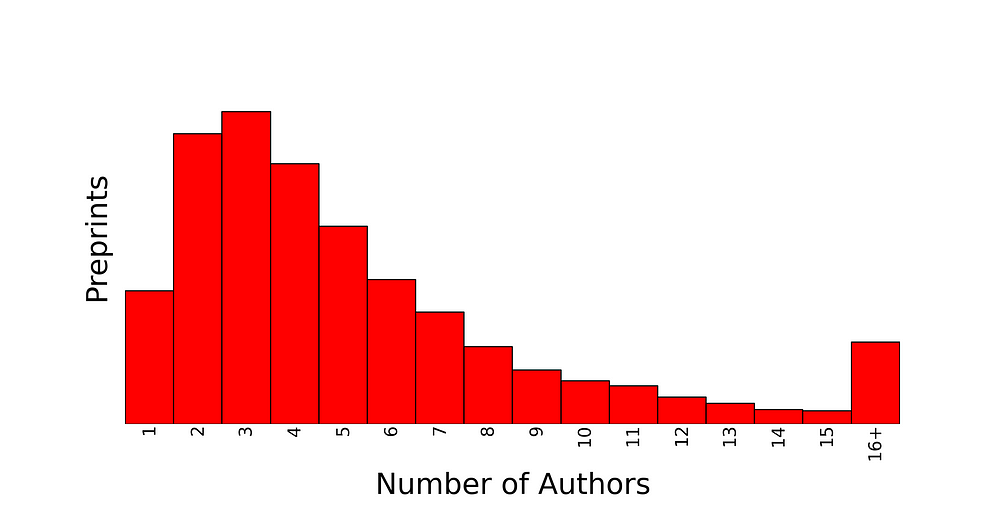 PeerJ Preprints:
PeerJ Preprints:
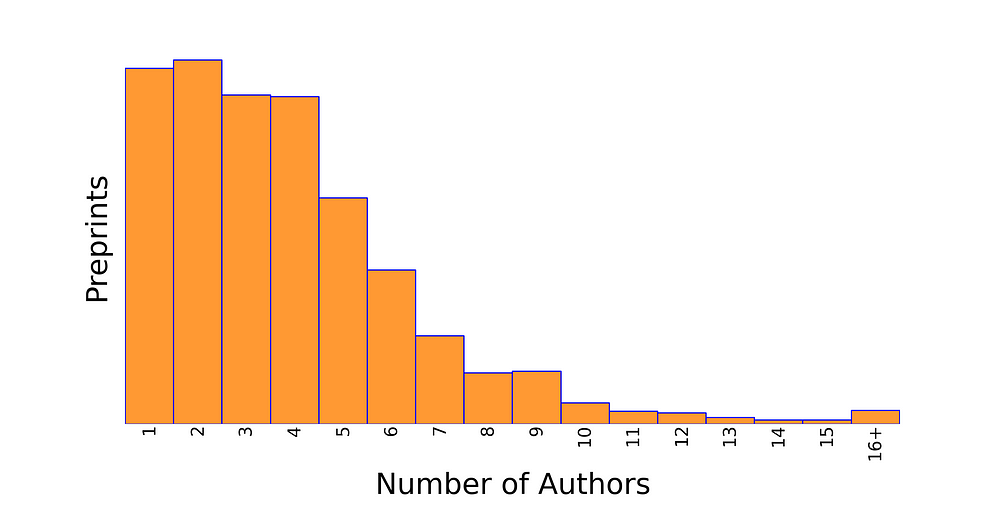 Again my intuitions seemed to be correct, PeerJ Preprints had a higher prevalence of single authors and a smaller number of multi-author papers.
Did these trends match your expectations? Let me know in the comments.
This post garnered more attention than I expected so I thought I would go ahead and show the plots for each server with all of their categories. It is important to remember that the PeerJ numbers are a little inflated since a preprint can be in multiple categories.
All bioRxiv categories:
Again my intuitions seemed to be correct, PeerJ Preprints had a higher prevalence of single authors and a smaller number of multi-author papers.
Did these trends match your expectations? Let me know in the comments.
This post garnered more attention than I expected so I thought I would go ahead and show the plots for each server with all of their categories. It is important to remember that the PeerJ numbers are a little inflated since a preprint can be in multiple categories.
All bioRxiv categories:
 All PeerJ Preprints, part 1:
All PeerJ Preprints, part 1:
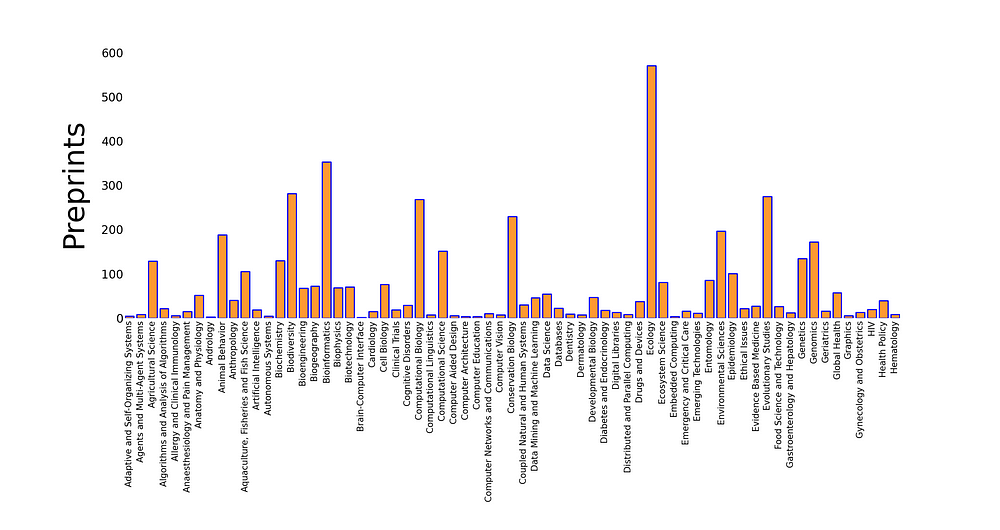 part 2:
part 2:
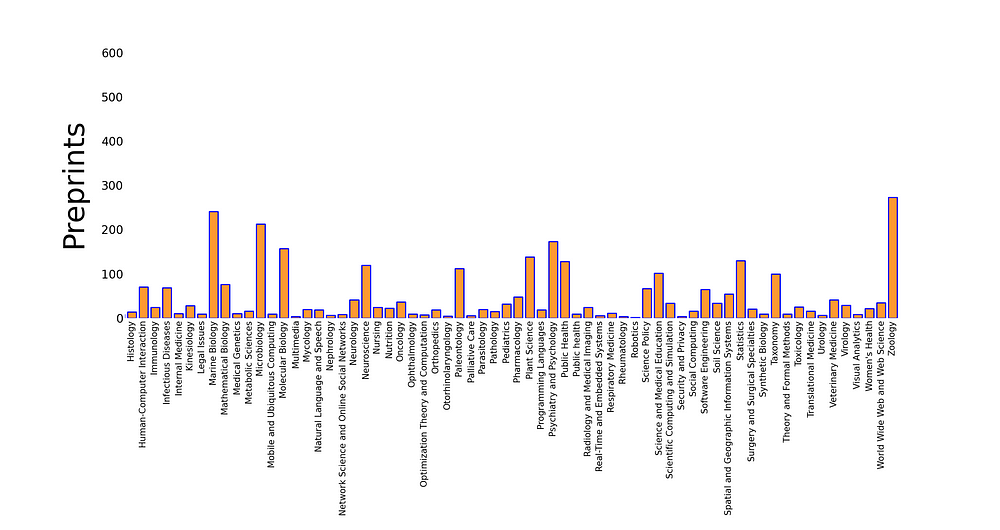 All arXiv q-bio categories:
All arXiv q-bio categories:
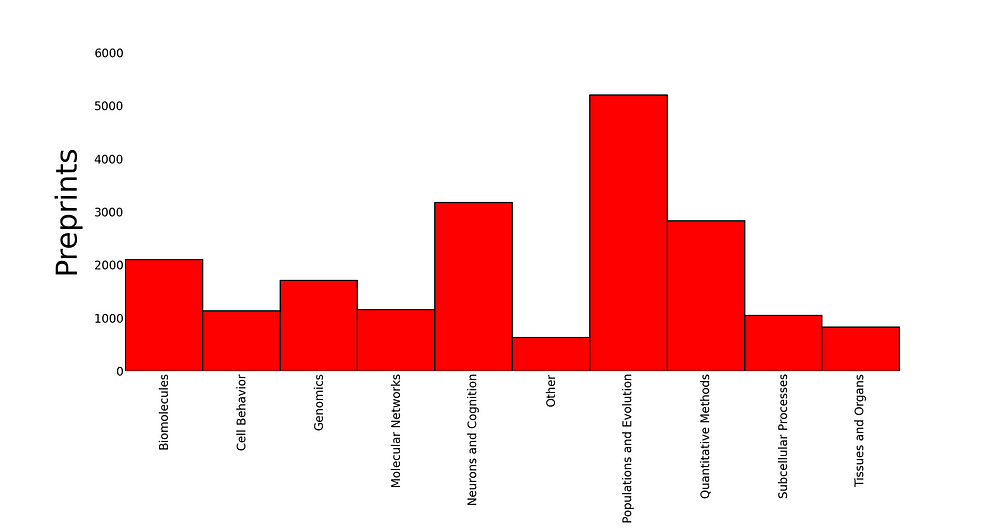








If you would like to comment on this post it is available at Medium
